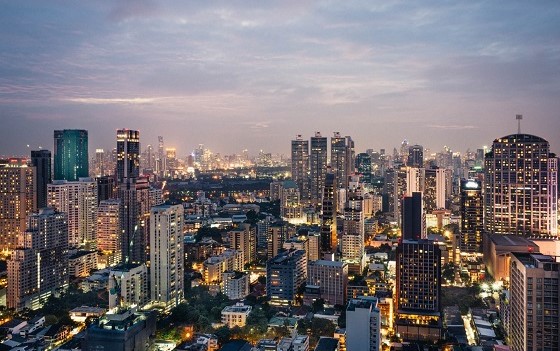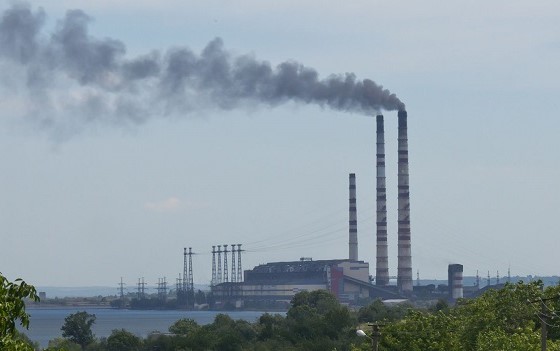Academic Year 2017/18
Agnes Lidbrink Ekman (2018)

Problem Solving in Africa: How Female Education Can Help Keep the Planet on a Sustainable Trajectory
Targeted at: Mr. Liu Zhenmin, Under-Secretary General for Economic and Social Affairs (DESA)
Executive Summary
As the world is facing a possible population increase of more than 20 billion people in the coming 70 years, our species is putting an increasing pressure on the world’s natural resources. So far, our ability to overcome natural limitations to growth by technological advancements has made this exponential increase possible, an example being the Haber-Bosch process facilitating the use of nitrogen fertilizers for our crops. Yet even our technological inventions have started to reach a scale where a negative impact on the planet is inevitable, causing scientists to introduce the concept of Planetary Boundaries as an attempt to find sustainable limits to our growth. Yet if our current growth rates would continue, it is highly unlikely that any of the boundaries will stay intact. Thus, if we want to ease the pressure we put on this planet, a reduction in our current population growth is vital. However, as the right to have a family is a core human right, this is a morally difficult and often avoided topic, even more after the subsequent gender discrimination following China’s One-Child Policy. Thus, by introducing indirect ways to limit population growth to the governments of countries where the rates are currently the largest, the negative stigma surrounding reduced female fertility can be avoided. This can be done by implementing policies offering conditional cash transfers to families sending their children to school, as especially increased female literacy rates have proven to reduce fertility, while simultaneously improving other SDGs related to education and gender equality.
Alexander Grantham (2018)

Combining Incentives with Regulation to Reduce Air Pollution in Cities:
A revision of transportation policy in the City of Oxford, UK
Targeted at: Policymakers at a County/City Council level
Executive Summary
Cities of varying size and context are facing similar environmental, economic and social issues associated with the modern-day trend of personal vehicle transportation. Oxford is no exception to this and despite decades of targeted policy, air pollution is plateauing above legal European levels. Under increasing pressure from Government, British councils are forced to consider more radical policies. With transport at the heart of the issue, Oxford’s future transport plans will be assessed. Despite positive measures to improve alternative transport methods, insufficient action is being taken to directly reduce personal car usage. This oversight tends to be driven by a common misconception that electric vehicles are a panacea. In fact, it is not cleaner vehicles that are needed, but fewer vehicles. To correct this, alternative solutions are proposed; these include restricting access to vehicles and implementing a unified emissions and congestion charge. A balance is sought between indispensable regulation, and more favoured market-based incentives. Positive existing plans, such as bus low emission zones (LEZ), are more boldly developed. Practical recommendations are offered to maximise public approval and aid the policy’s implementation. This case study provides underlying principles and practices that can be adapted by councils across the UK to suit their individual context.
Hollie Ryan (2018)

European fast fashion: tackling clothing microfibre shedding to prevent marine biodiversity loss
Targeted at: the European Commission
Executive Summary
By 2050, it is predicted there will be more plastic than fish in the world's oceans, a clear threat to marine biodiversity. The impacts are far and wide for over 700 species, most observable the entanglement of marine life in macroplastic, fishing nets. Ingested primary and secondary microplastic affect species through gut-fill, starvation, bioaccumulation, endocrine disruption, and biomagnification up the food chain. However, full implications of this novel entity are currently unknown, due to the varying types such as microfibres and microbeads, which have the ability to bioaccumulate persistent organic pollutants (POPs) in the environment. It is vital that precautionary principle is taken to prevent marine life interacting with microplastic, however, currently no legally binding global action is tackling this tragedy of the commons. National action has been taken to tackle single-use plastic bags and microbeads, and most recently the EU has implemented its first Plastic Strategy. While it strongly focuses on plastic packaging, it does not address the shedding of 0.5 million tonnes of microfibres in synthetic clothing annually, produced by the fashion industry. Therefore the European Union should invest in R&D to innovate non-microfibre shedding materials for the future; ban the use of hazardous chemicals in the production of fabric and manufacturing process of clothing; enforce mandatory preliminary washing by manufacturers of all synthetic clothing before put onto the global market; require all EU members to become Ginetex licensees and promote the Clever Care educational marketing campaign; and create strong clothing recycling infrastructure, with a reward card to incentivize consumers to put their unwanted items back into the circular economy.
Marina Zorila (2018)
A Multi-Instrument Approach to Preventing the Advancement of Unsustainable Land-System Change in the Congo Basin
Targeted at: United Nations Environment Programme (UNEP)
Executive Summary
The planetary boundary of land-system change refers to agricultural expansion and intensification contributing to global environmental change, with harmful effects on humans’ well-being and global sustainability. Compared to other tropical forests, the forests of the Congo Basin have seen the least amount of deforestation in the past; however, present deforestation rates are among the fastest worldwide. The detrimental ecological effect of land-system change is undeniable—spanning biodiversity loss, changes in albedo, surface temperature, precipitation, and climate change. Realistically, the agricultural potential of the Congo Basin is too large for it not to become utilized. Thus, immediate action to prevent unsustainable land-system change is crucial and must use a multi-instrument approach to achieve the best results. Effective policies span institutional reform, international agreements, REDD+ investment, the expansion of plantations into non-cultivated land or old plantations, and the support of smallholder farmers through measures such as subsidization and smallholder-industry partnerships.



